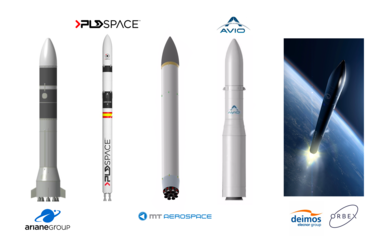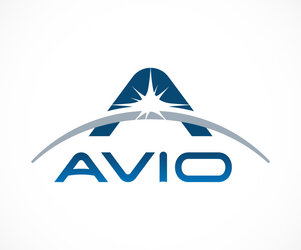Microlaunchers: new ways to access space
Access to space was in the spotlight at this week's Φ event which followed an ESA-hosted workshop on Europe’s emerging microlaunch services held in Paris, France for industry, investors and institutions.
After a presentation at this workshop on ESA’s vision and roadmap, five companies – PLD Space, Deimos, Avio, ArianeGroup and MT Aerospace – each shared the findings of their ESA-funded feasibility studies for an economically viable and commercially self-sustaining microlauncher.
ESA organised this networking event as a way of supporting European space innovation and entrepreneurship. There were 150 participants, and more than a hundred business-to-business meetings were held, offering commercial opportunities in a growing small satellites market in search of new ways to access space.
This is part of ESA’s Space 4.0 strategy, intended to strengthen European industry by fostering a globally competitive European space sector with increased industry participation in launcher development.
Microlaunchers are designed to carry payloads of up to 350 kg – typically small commercial or experimental satellites.

PLD Space presented a service based on its Miura (formerly Arion) launcher.
Deimos and Orbex presented AZμL, a service from the Azores islands using the Orbex prime vehicle.
Avio presented a service derived from their Vega workhorse and the upcoming Vega-C.
MT Aerospace presented the results of a trade of analysis including different concepts and launch locations.
ArianeGroup presented Q@TS – a "Quick @ccess To Space" ecosystem including a microlauncher concept based on Nammo’s hybrid propulsion technology.
ESA is now looking at ways of supporting underlying critical technologies, based on current study results and business opportunities.
Chosen technologies would be integrated within ESA’s existing technology portfolio, with opportunities to validate these technologies on large-scale demonstrators.















 Germany
Germany
 Austria
Austria
 Belgium
Belgium
 Denmark
Denmark
 Spain
Spain
 Estonia
Estonia
 Finland
Finland
 France
France
 Greece
Greece
 Hungary
Hungary
 Ireland
Ireland
 Italy
Italy
 Luxembourg
Luxembourg
 Norway
Norway
 The Netherlands
The Netherlands
 Poland
Poland
 Portugal
Portugal
 Czechia
Czechia
 Romania
Romania
 United Kingdom
United Kingdom
 Slovenia
Slovenia
 Sweden
Sweden
 Switzerland
Switzerland






























